Every time you visit a new website, your browser sends requests to multiple servers to fetch its content. These requests can sometimes fail due to problems with intermediary servers. In some cases, you’ll get the ERR_TUNNEL_CONNECTION_FAILED error.
This particular error is unique to Google Chrome. While you may need to delve into your system settings to troubleshoot it, the process is quite simple. Plus, it can help you resolve other issues with your internet connection.
In this article, we’ll explain what the “ERR_TUNNEL_CONNECTION_FAILED” is and what causes it. Then, we’ll show you how to fix it. Let’s get started!
Check Out Our Video Guide to Fixing ERR_TUNNEL_CONNECTION_FAILED:
What Does “ERR_TUNNEL_CONNECTION_FAILED” Mean?
A “tunnel” is a type of connection that allows data to be transmitted securely over a network. The ERR_TUNNEL_CONNECTION_FAILED error typically refers to a problem either with a proxy or a Domain Name System (DNS). It appears when the browser is unable to establish a connection with the server due to problems with the tunnel:
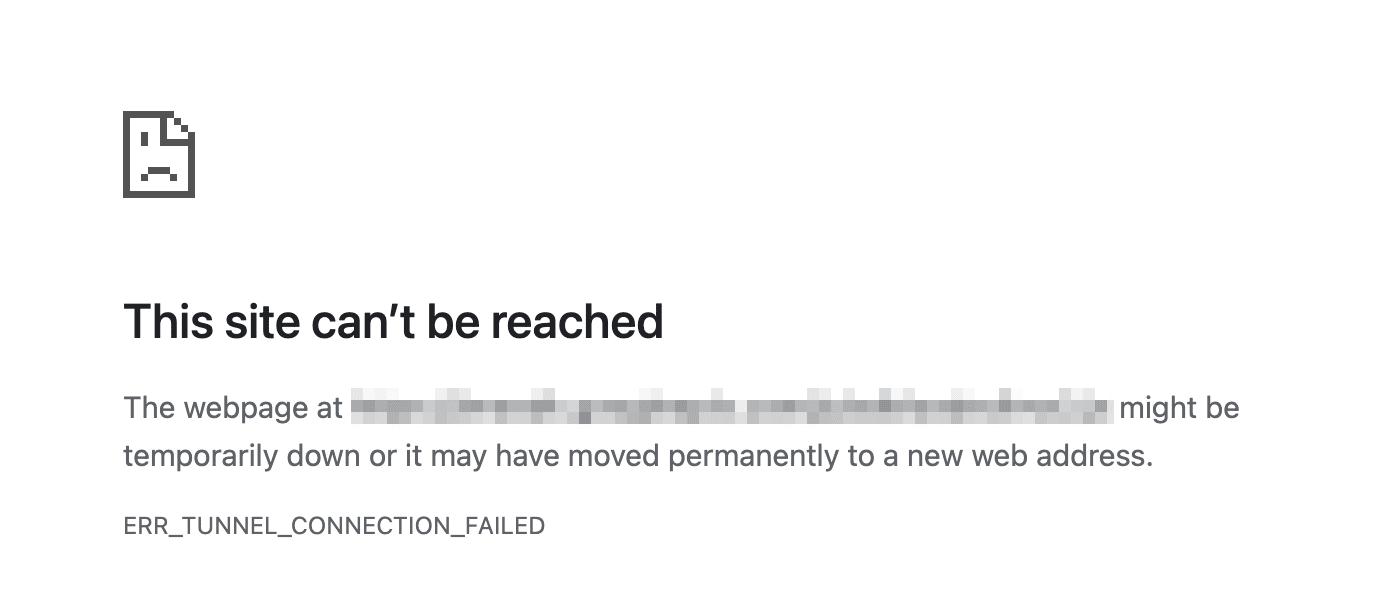
The error doesn’t indicate a problem with your internet connection itself. You may still be able to access other URLs or use online apps. In a nutshell, the DNS or proxy that you’re using may not be able to resolve the domain you’re trying to visit.
Other browsers can also run into problems that prevent them from showing you a website. However, the specific wording of the ERR_TUNNEL_CONNECTION_FAILED error is unique to Google Chrome.
This is one of those rare scenarios where the error message displayed in the browser has little to do with the underlying problem. According to Chrome, the ERR_TUNNEL_CONNECTION_FAILED error can point to a website being down or having moved to a new address. That is a generic error message and does not reflect the real issues behind it.
How To Fix the ERR_TUNNEL_CONNECTION_FAILED Error (4 Ways)
Some browsers enable you to configure the proxy server or DNS through their settings. However, if you use Chrome, you’ll need to do this through your Operating System (OS).
In the next few sections, we’ll show how to troubleshoot potential proxy and DNS issues in both Windows and macOS. Before you proceed, we recommend that you clear the browser cache.
1. Check Your Proxy Settings (And Disable Them If Necessary)
Issues with proxy servers are the main cause behind the ERR_TUNNEL_CONNECTION_FAILED error. Usually, you can solve this problem by configuring the OS to either detect proxy settings automatically or configure it to use a specific server.
To do this in Windows, open the command prompt and type in inetpl.cpl. This will open the Internet Properties configuration window. Go to Connections > LAN Settings:
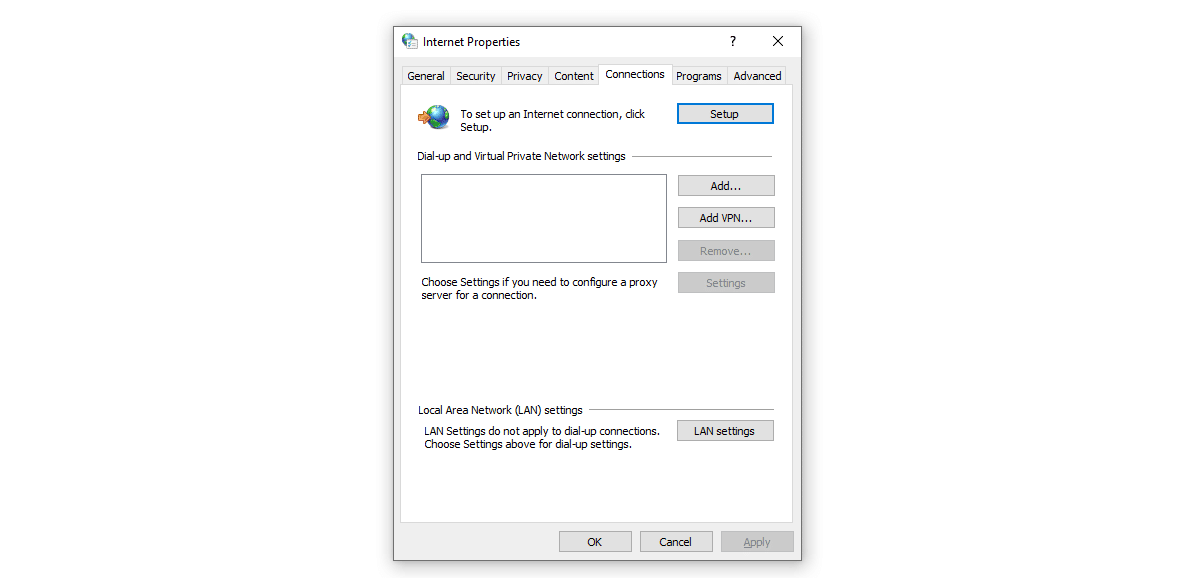
On the next screen, check to see if Windows is using a specific proxy server. If that’s the case, you should see the server information under Proxy server.
By default, your internet connection should be configured to detect proxy settings automatically. If that option is disabled, try enabling it temporarily:
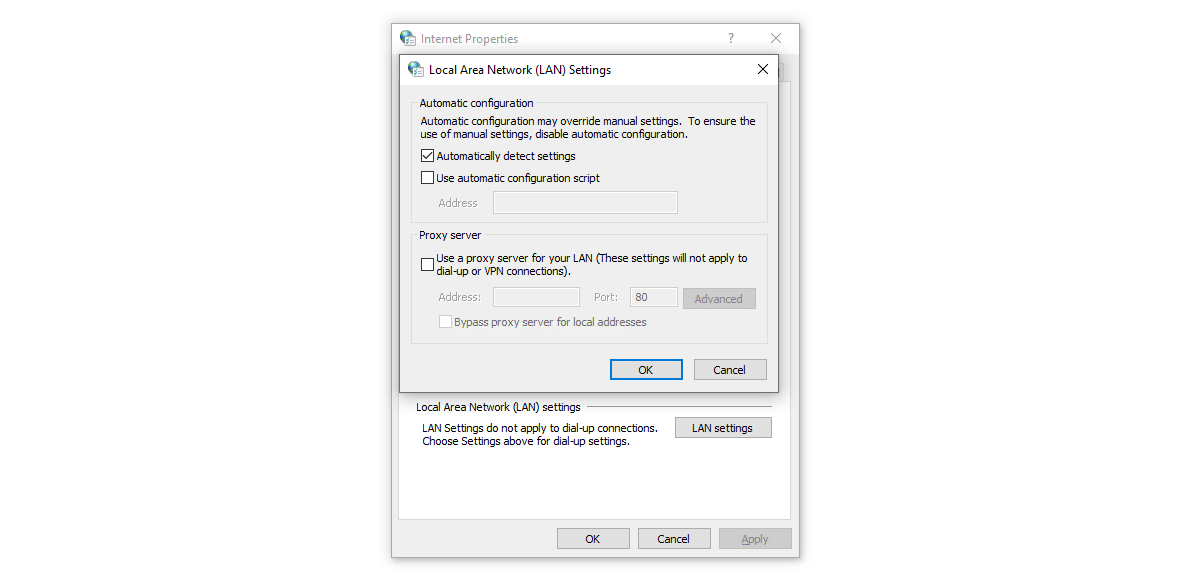
After enabling automatic configuration, check to see if the ERR_TUNNEL_CONNECTION_FAILED message has disappeared. If the error persists, try disabling both the automatic proxy configuration and the manual setup. This means navigating the web with no proxy.
If you’re using macOS, you’ll need to go into the Apple menu and navigate to System Settings > Network. Select a network service on the menu to the right and click on Details > Proxies.
Here, you can choose between manual and automatic proxy configuration and disable either setting as well:
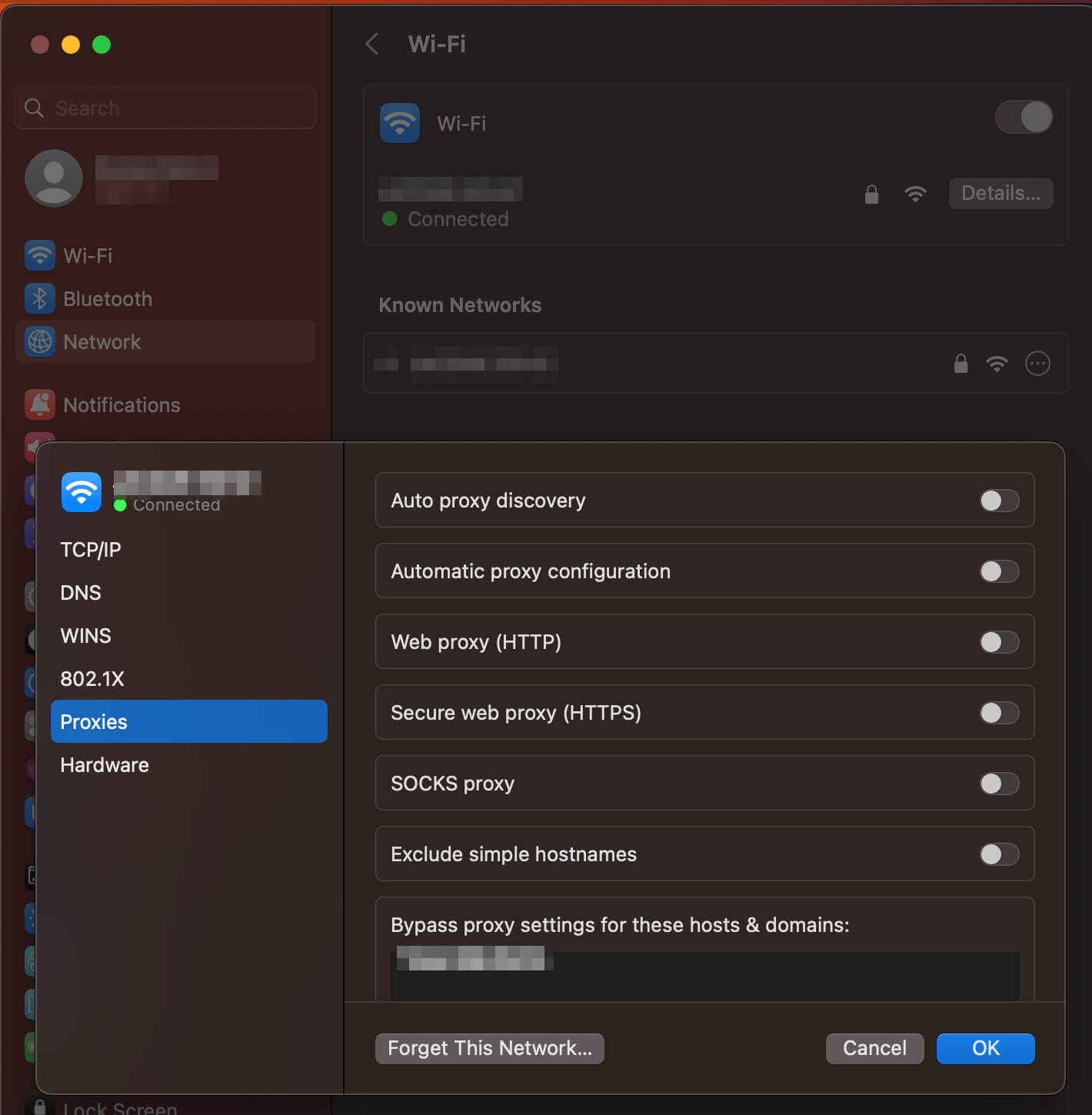
Then, check to see if the error still comes up with the proxy disabled. If it does, you can move on to the next step.
2. Reset Your Internet Settings
By “resetting” your internet configuration, we mean renewing your computer’s IP address and flushing the local DNS cache. You can read our guide to learn more about how caches work.
To reset the internet settings in Windows, open the command prompt in administrator mode and type the following commands one by one. After typing each command, hit enter to execute it and then proceed to the next one:
IPCONFIG /FLUSHDNS
NBTSTAT –R
NETSH INT IP RESET
NETSH WINSOCK RESETAfter the last command, you can try restarting Chrome to see if the ERR_TUNNEL_CONNECTION_FAILED error persists. If it does, the issue probably has to do with the DNS configuration.
Unfortunately, macOS doesn’t have a dedicated function for resetting the network connection. However, deleting and re-adding your Wi-Fi network or wired connection should have the same effect.
3. Change Your DNS Server
By default, your OS will use the DNS server provided by your Internet Service Provider (ISP). However, you can also configure your system to use a specific DNS.
If you run into the ERR_TUNNEL_CONNECTION_FAILED error, the problem might be with your current DNS configuration. To check that configuration in Windows, open the Network status screen and select Advanced network settings > Change adapter options:
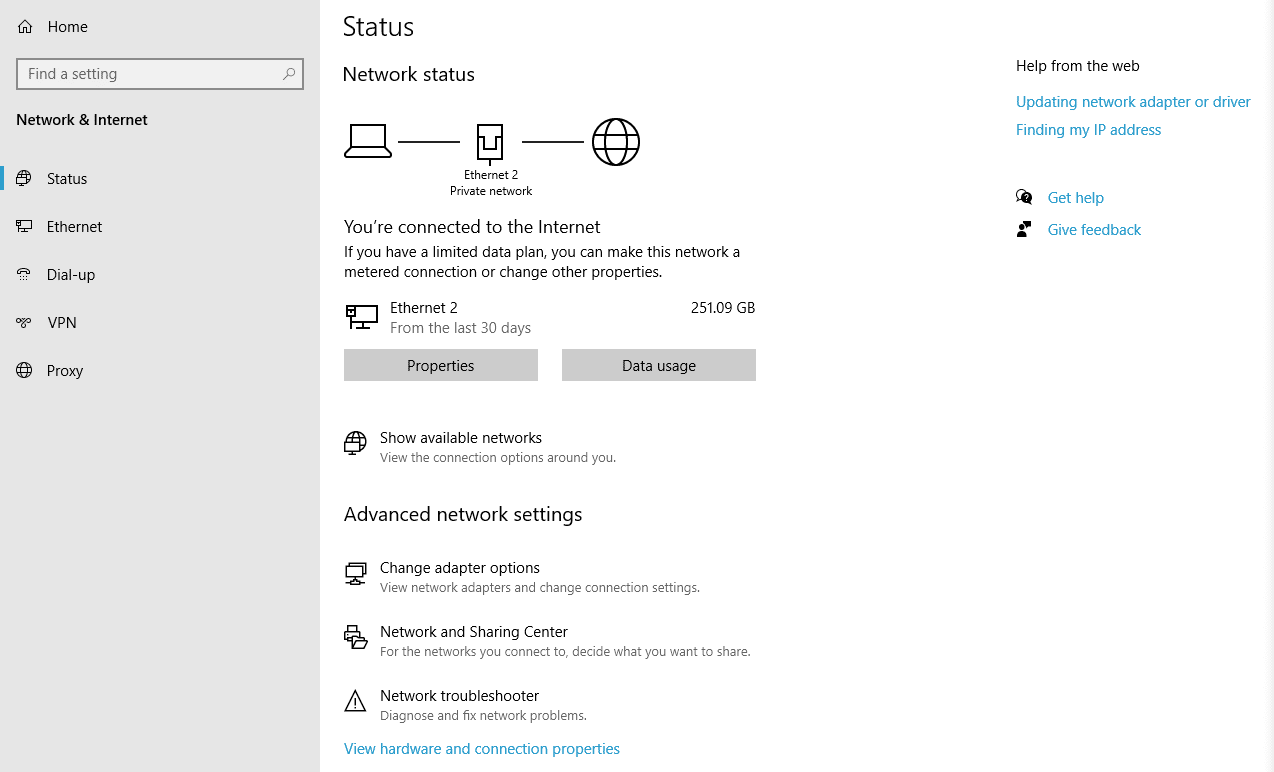
In the next screen, look for your active network connection, right-click on it, and choose Properties. A popup will appear. Here, you’ll need to select Internet Protocol Version 4 (TCP/IPv4) and click on Properties:

This next window enables you to configure the IP and DNS settings for the active internet connection. By default, Windows will obtain both an IP address and the DNS server automatically.
In this example, we’re using the public Google DNS instead of the default option from our ISP:

If the connection is configured to obtain the DNS server automatically, we recommend using a public DNS. There are plenty of options, including Cisco OpenDNS, Cloudflare, and Google Public DNS. In some cases, using a public DNS might improve your page loading times.
To use a public DNS, you’ll need to enter the server address as well as the alternate (this is optional but recommended). If you’re already using a custom DNS, try configuring the connection to obtain a DNS server automatically.
Then, refresh the browser. If the ERR_TUNNEL_CONNECTION_FAILED error disappears, there might be a temporary issue with the custom DNS you’re using.
4. Reset Your Chrome Installation
Chrome has an option that enables you to reset the browser to its default settings without needing to reinstall it. This is useful as a last resort if none of the proxy and DNS configuration changes helped resolve the ERR_TUNNEL_CONNECTION_FAILED issue.
To reset Chrome, go to the browser’s settings and select the Reset and clean up tab. Inside, choose the Restore settings to their original defaults option.
Chrome will ask you to confirm your request and warn you that the process will disable extensions and delete temporary data (but not bookmarks):
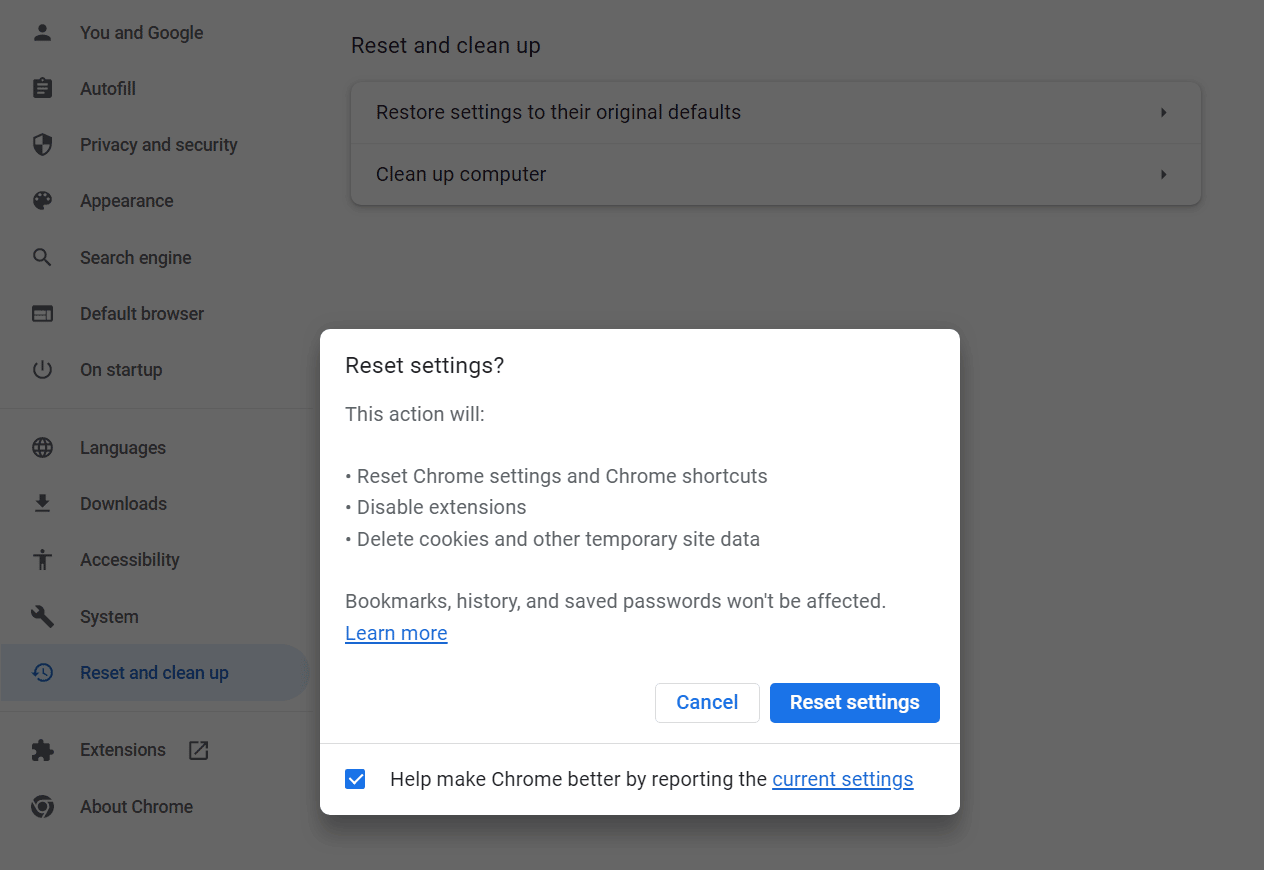
Click on Reset settings and wait for Chrome to restart. Then, check to see if the ERR_TUNNEL_CONNECTION_FAILED error has disappeared.
If the error persists, you might want to check to see if other browsers, such as Mozilla, return a connection error as well. If they do, the problem likely has to do with the proxy and DNS settings and not the browser. This means you’ll need to return to the previous methods and check to see if you did everything correctly.
Where Else Can the “ERR_TUNNEL_CONNECTION_FAILED” Error Appear?
The ERR_TUNNEL_CONNECTION_FAILED error is unique to Google Chrome. However, you can also run into proxy and DNS-server-related errors in other browsers. For example, the DNS Server Not Responding error can affect browsers such as Chrome, Safari, Firefox, and Edge.
In terms of proxy errors, one issue you might encounter is “407 Proxy Authentication Required”. This error means the proxy credentials you’re using aren’t working, or you failed to configure them properly.
If you run into any errors related to DNS or proxy servers, you can use some of the methods we covered earlier to troubleshoot them. In most cases, changing the DNS or proxy configuration or using a Virtual Private Network (VPN) should solve the problem.
Summary
The ERR_TUNNEL_CONNECTION_FAILED error can be confusing because Chrome suggests it might have to do with website downtime or migration. However, this error tends to pop up due to configuration issues with proxy or DNS servers.
Regardless of what OS you’re using, the steps to troubleshooting this error are the same. Once you’ve cleared your Google cache, you can try the solutions listed above.
If you’re a Kinsta customer and you’re running into the ERR_TUNNEL_CONNECTION_FAILED error while trying to access your site, you can always reach out to us for help. Our plans offer top-quality support to help troubleshoot any issues that you may encounter!



